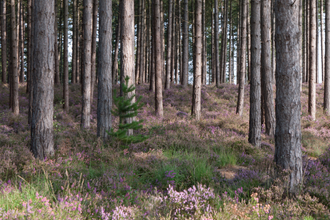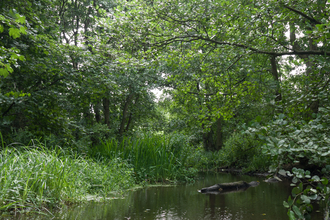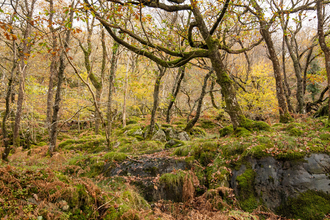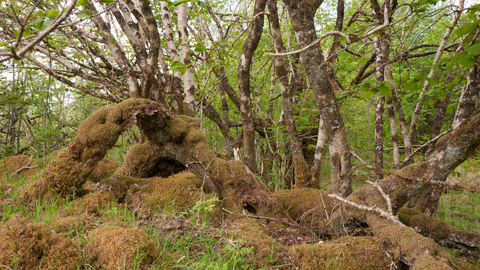
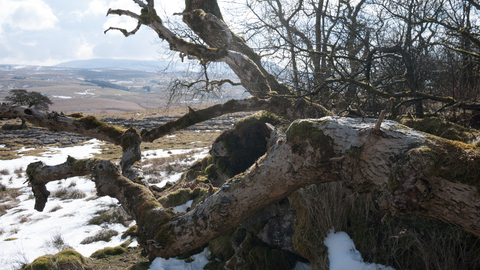
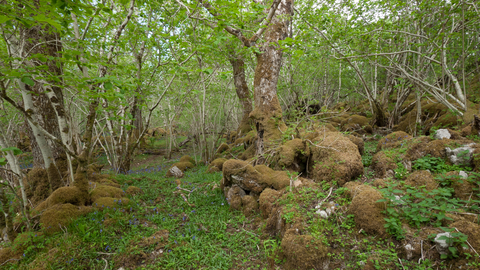
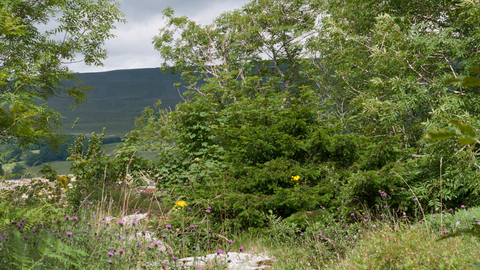
Upland mixed ash wood
What is it?
These are mixed deciduous woods generally found in the cooler uplands and always growing over limestone or where base-rich water flows off higher ground. Ash is joined by species such as rowan, downy birch, bird cherry, wych elm and oaks and, in the south, field maple, small-leaved lime and beech. On the continent, sycamore is native to this type of woodland, but it is considered to be an introduced species in the UK.
Ash is one of the last trees to come into leaf and its divided leaves cast a light shade. Together with the calcareous substrate, this relatively light shade means these woodlands can be species-rich. Where ungrazed, the ground flora can be a carpet of dog’s mercury and ramsons with lily-of-the-valley, Solomon’s-seal, herb-Paris and, in the north, a distinctive suite of species including globe flower, wood crane’s-bill, marsh hawk’s-beard and lady’s-mantle. Ferns are very characteristic, including soft shield fern, buckler ferns and hart’s-tongue fern. Grazing leads to a grassier ground flora.
In the oceanic climate of north-west Scotland, mosses, liverworts and ferns are particularly abundant, growing on the trees and giving the woods an evergreen feel in winter. There is often a rich invertebrate fauna, including species dependent on flushes.
Why is it like this?
Upland mixed ash woods were probably never as extensive as other woodland types, being limited by the relatively fragmented distribution of limestone in the uplands. However, their area has been much reduced and remaining sites are often small. Clearance, quarrying and over-grazing has largely confined them to rocky outcrops and ravines, narrow strips along streams, and patches within other woodland types where conditions are right. When grazed, transitions with limestone pavement or grassland occur.
Distribution in the UK
About 12,500ha is recorded, mainly on limestone in the north and west, although there are a few notable sites on southern chalk.
What to look for
In spring, look for a rich ground flora including rarities such as dark-red helleborine, Jacob’s ladder and whorled Solomon’s seal. The alkaline bark of ash, sycamore and elm can support diverse lichen communities and in oceanic areas, lobarian lichens may be present. Flushed areas are particularly good for invertebrates, including some rare caddisflies. In the absence of grazing, ash regenerates readily and features such as lime kilns found within woodlands may indicate where more recent regeneration has taken place. These woods were once coppiced for firewood and pollarded trees harvested for timber and branches to feed to livestock, so coppice stools and old pollards can still be found.
Conservation
Ash is very palatable to livestock and deer, and grazing often limits the natural regeneration of ash and reduces structural variation within these woods. Ash die-back could significantly impact on this habitat in the future – Dutch elm disease has already done so.

